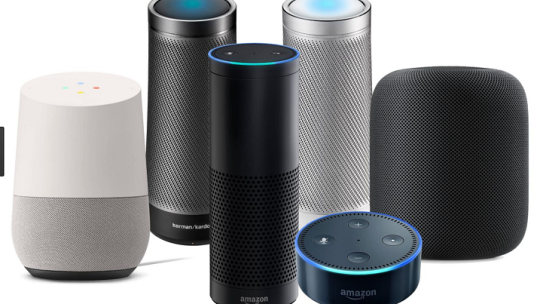
With Amazon, Walmart and now The Home Depot dabbling in voice-activated shopping, it’s apparent that leading retailers are taking the technology very seriously. And given customer adoption, they should be.
More than 35 million Americans will use a voice-activated assistant device at least once a month in 2017, a nearly 130% jump from last year, according to eMarketer. Presently, 29% of voice device owners use them to shop, while 41% of voice device owners plan to use them in the future, according to Narvar.
The RTP team discusses the future of voice shopping and how retailers can best leverage the technology going ahead.
Debbie Hauss, Editor-in-Chief: Even some of the slowest technology adopters I know are starting to use voice for activities like engaging with Google Maps. It’s just easier, and safer in many instances to be able to communicate using voice. At first, services like Google Maps and Uber may be the low-hanging fruit for voice. Then I can see consumers starting to use voice to search restaurants, brands and products while walking around an unfamiliar city or town. Of course, when consumers are relaxing at home, voice will come in handy for changing the TV station, turning on/off the lights and ordering dinner. I don’t expect shopping for luxury goods and other high-end items to be an initial use for voice.
Adam Blair, Executive Editor: One of the smartest people I know in this industry, Rob Garf from Salesforce, had an interesting perspective on the combination of AI and voice, which he believes is going to be the next big step in the shopping user interface. Voice means a major disruption in the ways shoppers have traditionally searched for products. Instead of an item being prominently placed in the shop’s front window, high up on the home page or “above the fold” on a mobile device, the voice platform will “decide” what the top choice will be when the customer asks: “Where can I buy a new pair of shoes?” Presumably the voice response will be based on factors like the customer’s purchase history or recorded preferences, but there will almost certainly be room for lots of other hidden influencers. Voice is powerful: even Captain Kirk paid attention when the computer spoke on Star Trek.
Marie Griffin, Managing Editor: Voice control has only just begun to transform the way consumers access information, interact with brands and, of course, shop. The pace of adoption of voice-activated in-home devices — Amazon’s Echo line and Google Home to start — has been quick, but it will only increase when Apple’s HomePod becomes available at year end. Across functional areas from IT to merchandising and payments, retailers have been working hard to keep pace with the consumer’s expectations for ubiquitous smartphones. Now they have to find the resources to respond to the voice-first transformation in mobile and the home. To make sure neither imperative is neglected, I recommend dedicating teams to each that work across all affected departments. If you are thinking of trying to stretch your existing people even thinner, don’t. This is yet another technological juncture that will lead to a weeding out, and you have to decide now where you will end up.
Klaudia Tirico, Features Editor: Research shows that 30 million households will have a voice-first, in-home device (like an Amazon Echo or Google Home) by the end of 2017. Still, I am not sure when consumers will actually leverage these devices to shop. I have an Amazon Echo Dot, and while I find it very useful to add items to my shopping list and fun to play “Jeopardy” with my husband, I haven’t actually made an Amazon purchase through voice alone. I think it will take some time for people to get used to it, but that gives retailers that have not yet thought about implementing voice services some time to figure things out. I think the beauty industry could benefit from voice. I find beauty fanatics to be digitally savvy and could totally see them asking an assistant about the latest trends in beauty, what items are hot sellers, etc. Your move, Ulta.
Glenn Taylor, Senior Editor: With so many shoppers expected to leverage voice-activation technology, retailers are going to have to be even more creative about data analysis. Suggesting products where consumers are in a pinch or are on the go may be one of voice shopping’s biggest benefits, and a lot of that will have to derive from shopper search history or purchase history. That way, the tech can build out lists and serve the shopper the way that Amazon Dash buttons are intended to. I could see Best Buy, GameStop and Newegg being big beneficiaries of the technology, with the latter two having a firm grasp on the most tech-savvy shoppers. These shoppers are more than likely to be the most interested in buying voice technology (and also capable of using it correctly). I anticipate that retailers seeking to capitalize on these new, young consumers will increase their emphasis on voice technology.






